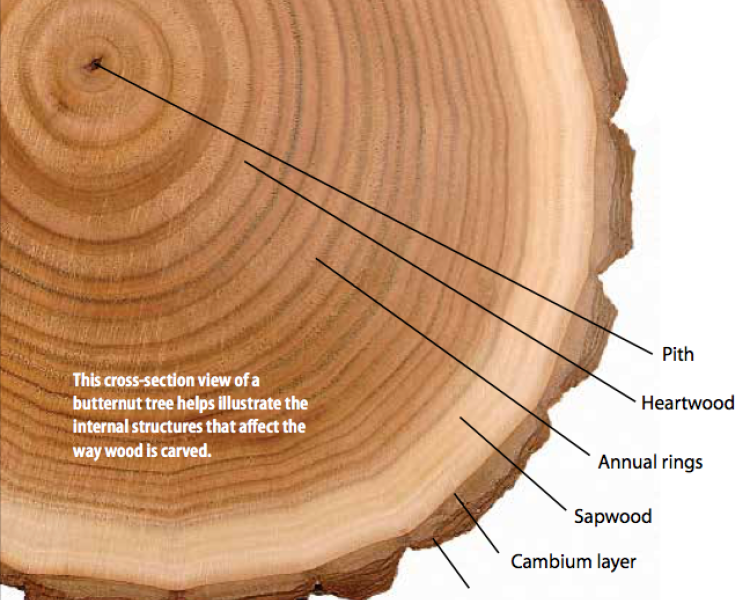HARDWOOD ANATOMY
مشاركة

In sharp contrast to the simple anatomy of softwoods, the hardwoods of the world exhibit a dazzling array of endgrain patterns and intricate motifs; and it’s in this complexity that the challenge (and joy) of wood identification really comes alive. An unknown hardwood sample could be just about anything under the sun, yet as each anatomical feature is considered, anything is narrowed down to something.
That is to say, throughout the identification process, the more observations that can be made and classified about a hardwood sample, the more and more the field of possible candidates narrows. Ultimately, the point is reached where no further refinements can be recorded, and either a clear identification emerges, or a handful of possibilities remain.
VESSEL ELEMENTS
When viewed from the endgrain, vessels simply appear to be holes in the wood—what are commonly referred to as pores.
In a live tree, vessels serve as the pipelines within the trunk, transporting sap within the tree. (Softwoods completely lack vessels, and instead rely on tracheids for sap conduction.) Vessel elements are the largest type of cells, and unlike the other hardwood cell types, they can be viewed individually—oftentimes even without any sort of magnification.
For simplicity’s sake, vessel elements will simply be referred to as pores throughout this website.
Hardwoods are initially divided into three main categories according to the arrangement of their pores, commonly called its porosity.
OROSITY
Ring-Porous
European Ash (endgrain 10x)
European Ash (Fraxinus excelsior) is an example of a ring-porous wood, with the earlywood pores clearly forming rings or bands—in this case two to four rows wide.
Diffuse-Porous
Afzelia (endgrain 10x)
Afzelia (Afzelia spp.) is an example of a diffuse-porous wood, with no clear earlywood/latewood pore arrangement, and no significant difference in pore size.
Semi-Ring-Porous
Butternut (endgrain 10x)
Butternut (Juglans cinerea) is an example of a semi-ring-porous wood. Although the pores don’t form clear rows, the size gradually decreases from the earlywood to the latewood.


